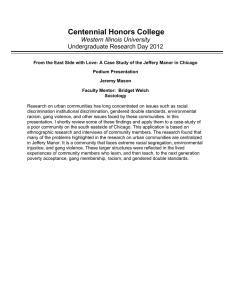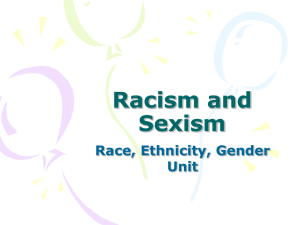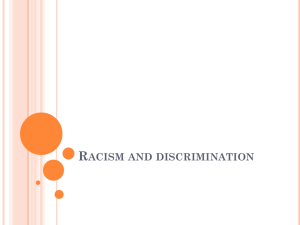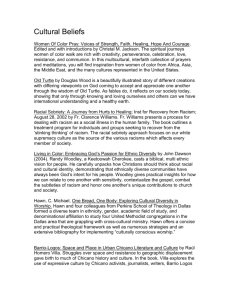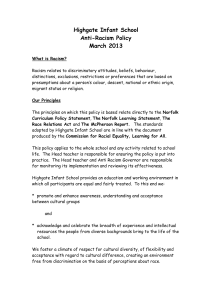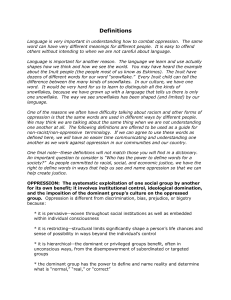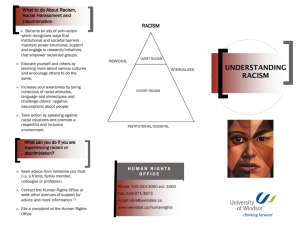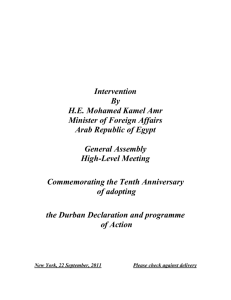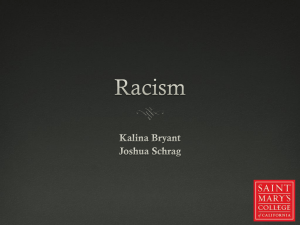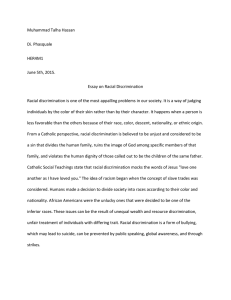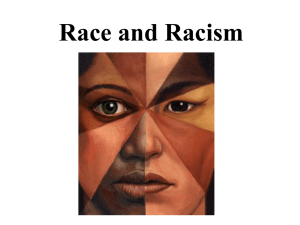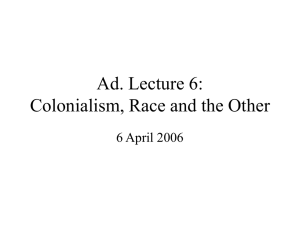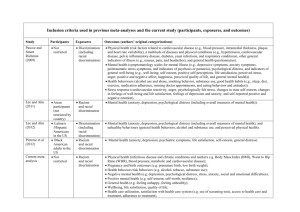POINTS FROM KEYNOTE PRESENTATION: Ethnicity
advertisement
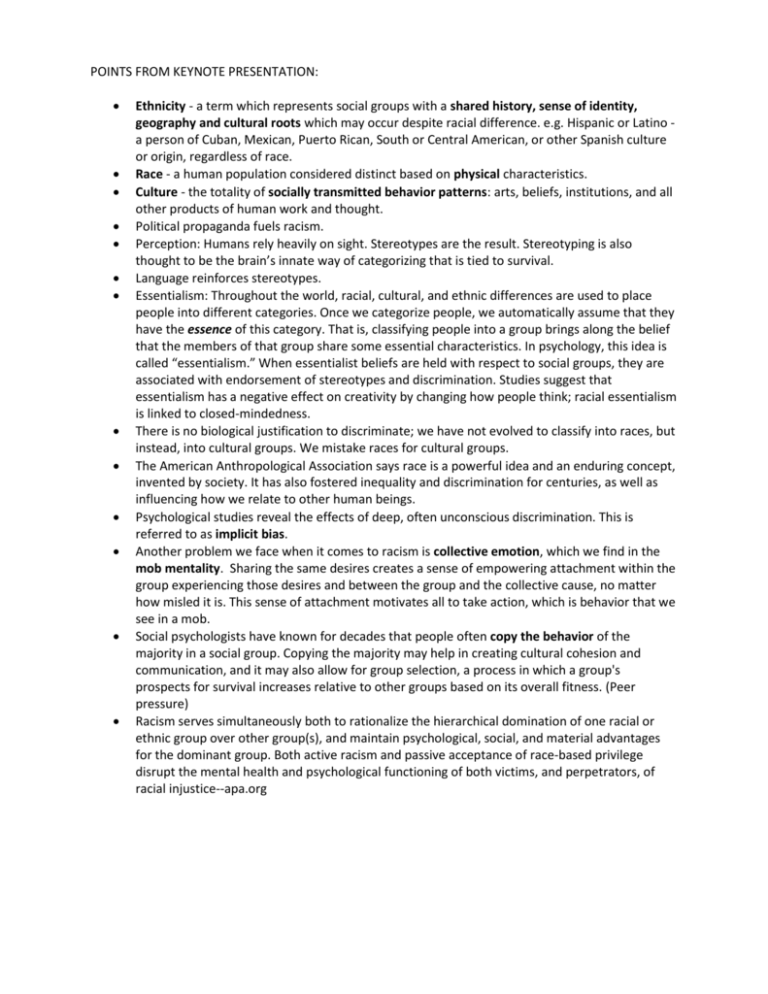
POINTS FROM KEYNOTE PRESENTATION: Ethnicity - a term which represents social groups with a shared history, sense of identity, geography and cultural roots which may occur despite racial difference. e.g. Hispanic or Latino a person of Cuban, Mexican, Puerto Rican, South or Central American, or other Spanish culture or origin, regardless of race. Race - a human population considered distinct based on physical characteristics. Culture - the totality of socially transmitted behavior patterns: arts, beliefs, institutions, and all other products of human work and thought. Political propaganda fuels racism. Perception: Humans rely heavily on sight. Stereotypes are the result. Stereotyping is also thought to be the brain’s innate way of categorizing that is tied to survival. Language reinforces stereotypes. Essentialism: Throughout the world, racial, cultural, and ethnic differences are used to place people into different categories. Once we categorize people, we automatically assume that they have the essence of this category. That is, classifying people into a group brings along the belief that the members of that group share some essential characteristics. In psychology, this idea is called “essentialism.” When essentialist beliefs are held with respect to social groups, they are associated with endorsement of stereotypes and discrimination. Studies suggest that essentialism has a negative effect on creativity by changing how people think; racial essentialism is linked to closed-mindedness. There is no biological justification to discriminate; we have not evolved to classify into races, but instead, into cultural groups. We mistake races for cultural groups. The American Anthropological Association says race is a powerful idea and an enduring concept, invented by society. It has also fostered inequality and discrimination for centuries, as well as influencing how we relate to other human beings. Psychological studies reveal the effects of deep, often unconscious discrimination. This is referred to as implicit bias. Another problem we face when it comes to racism is collective emotion, which we find in the mob mentality. Sharing the same desires creates a sense of empowering attachment within the group experiencing those desires and between the group and the collective cause, no matter how misled it is. This sense of attachment motivates all to take action, which is behavior that we see in a mob. Social psychologists have known for decades that people often copy the behavior of the majority in a social group. Copying the majority may help in creating cultural cohesion and communication, and it may also allow for group selection, a process in which a group's prospects for survival increases relative to other groups based on its overall fitness. (Peer pressure) Racism serves simultaneously both to rationalize the hierarchical domination of one racial or ethnic group over other group(s), and maintain psychological, social, and material advantages for the dominant group. Both active racism and passive acceptance of race-based privilege disrupt the mental health and psychological functioning of both victims, and perpetrators, of racial injustice--apa.org





